The Kaiser's men’s medals
Article about: The Kaiser's men’s medals (and Homelands) Some time ago acquiring this postcard for my collection. It’s a small piece of art on paper that someone used on April 21, 1916 It’s an incred
-
04-27-2024, 05:06 PM
#401

Excellent look at the Stalingrad debacle. I was under the impression that Seydlitz was a descendant of the 18th century cavalry general. As an aside, a good friend of mine had Edler von Daniels as a family friend, and when he went to Germany after he died in the 1980's, he found to his horror that the widow of Daniels had thrown away all his military relics. My friend only managed to save one photo.
-
04-27-2024, 08:19 PM
#402

Thanks for commenting, Vince.
The anecdote about your friend, discovering that von Daniels' widow had gotten rid of his military memorabilia.... I think it is the nightmare of every collector and fan of military history!
Regards
Santi
Last edited by TabsTabs1964; 04-27-2024 at 09:09 PM.
-
04-27-2024, 11:22 PM
#403

Yes Santi, you can imagine our looks of horror at our militaria meeting after he came back from his trip. And it wasn't just a couple of things the widow threw out, apparently it was a whole steamer trunk full of stuff......
-
04-28-2024, 11:40 AM
#404
-
04-28-2024, 12:00 PM
#405

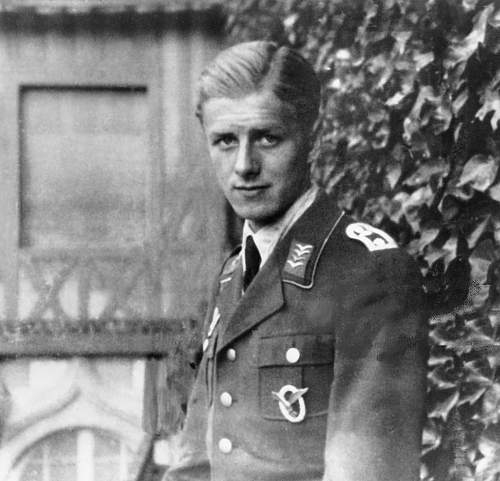
Heinrich Graf von Einsiedel. July 26, 1921 - July 18, 2007
Einsiedel, a great-grandson of Otto von Bismarck, was born in Potsdam, Province of Brandenburg, as the youngest child to Count Herbert von Einsiedel (1885–1945) and his wife, Countess Irene von Bismarck-Schönhausen (1888–1982).
His mother Irene, was the daughter of Wilhelm Otto Albrecht von Bismarck-Schönhausen (1852-1901) and his wife Sibille von Arnim (von Bismarck-Schönhausen) (1864-1948)
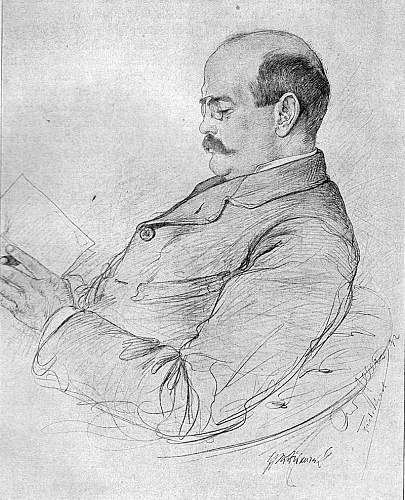
His grandfather Wilhelm von Bismarck was the youngest son of Chancellor Bismarck.
His grandfather Wilhelm Otto Albrecht, was the third son (Marie Johanna Elisabeth, 1848; Herbert, 1849; and Wilhelm Otto Albrecht, 1852) of Otto von Bismarck (1815-1898) and his wife Johana von Puttkamer (von Bismarck-Schönhausen) (1824-1894)
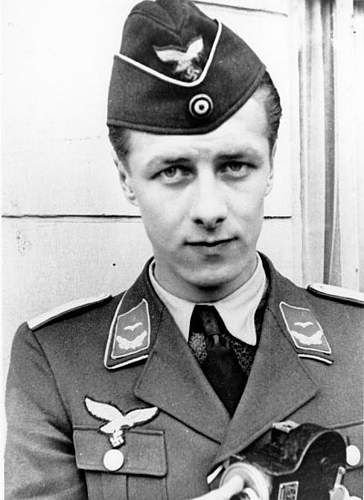
Another image of Heinrich von Einsiedel
-
04-28-2024, 12:15 PM
#406

The fighter pilot Einsiedel fought in the Soviet Union campaign and was shot down in the late fall of 1942. His capture caused some sensation, as he was the great-grandson of the former Reich Chancellor Otto von Bismarck.
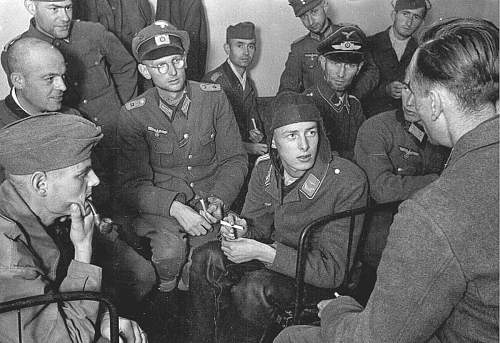
von Einsiedel sitting in the center of the image with his pilot's hat and a cigarette in his hand
Einsiedel, influenced by the bündische Jugend youth movement, rejected the Nazi regime and acknowledged its criminal nature, after discussions with Soviet officers. He soon began to encourage his fellow prisoners to declare their opposition to Hitler openly.
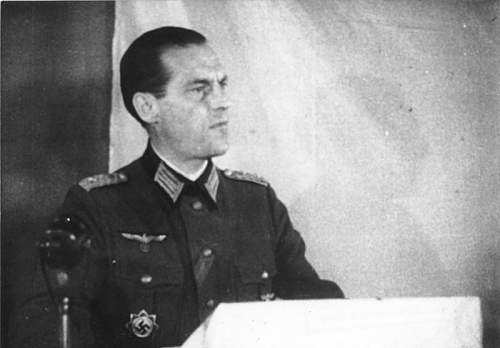
Colonel Hans-Günter van Hooven, photographed at the BDO foundation ceremony
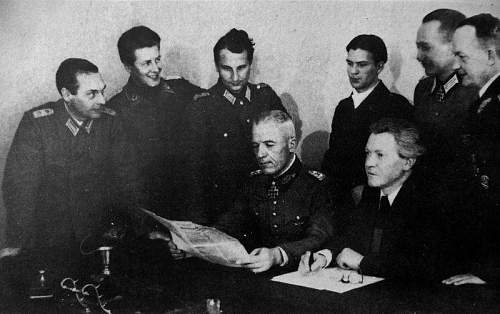
Image of the BDO committee members. Our protagonist is second from the left. In the center von Seydlitz reading the newspaper
Second Lieutenant Einsiedel became the vice-president of the National Committee “Free Germany” (NKFD).
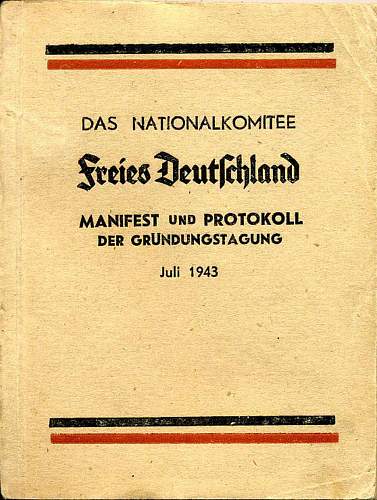
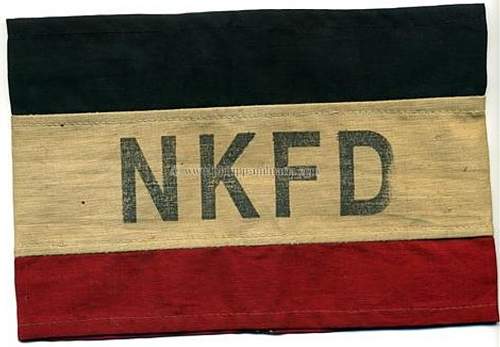
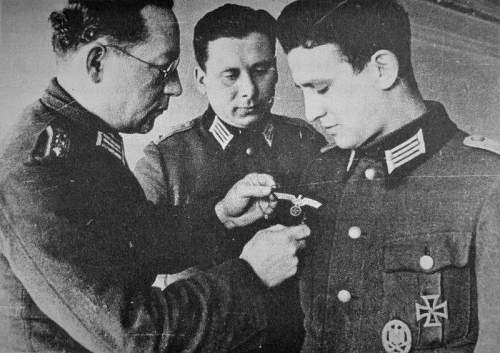
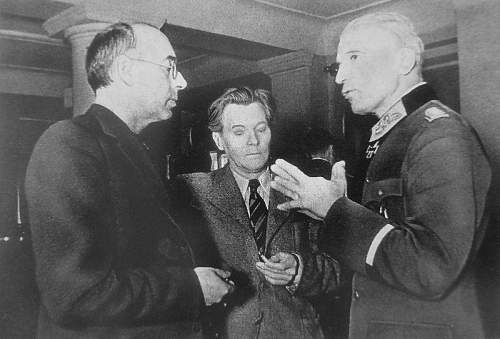
Horrified by the attacks carried out by Soviet soldiers in East Prussia in 1945, Einsiedel and other members of the NKFD – including Jesco von Puttkamer and Heinrich Gerlach – realized that the political goals behind the foundation of the National Committee would be impossible to achieve.
When Einsiedel protested against the atrocities of the Red Army in East Prussia towards the end of the war, he fell out of favor with the Soviet rulers. He was classified as a Red Army slanderer and “politically unreliable.”
After his release from captivity in June 1947, he joined the SED in July 1947 and worked as a journalist in East Berlin. Detained in the American zone while visiting his mother in May 1948, he returned to East Berlin after six months in prison for a passport crime. He feared being arrested by the Soviet secret police and fled to West Berlin. So yes, he openly called the SED dictatorship “inhuman” and left the party.
He later worked in the Federal Republic of Germany as a translator and essayist. From 1957 to 1992 he was a member of the SPD. He lived in Berlin and other cities and dedicated himself to the cause of recognition of the NKFD (Das Nationalkomitee Freies Deutschland 1943-1945) as a resistance movement, which occurred in the mid-1990s.
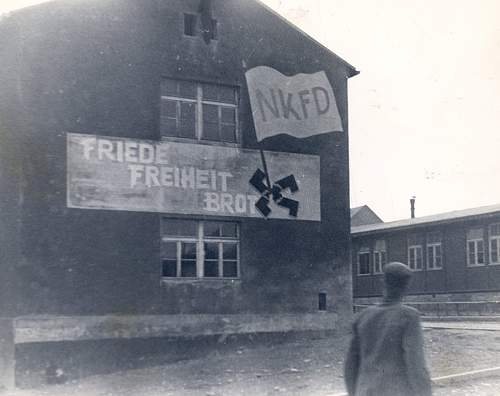
Elected through the state list of the Party of Democratic Socialism (PDS) in Saxony, Einsiedel was a member of the German Bundestag from 1994 to 1998.
-
04-28-2024, 12:22 PM
#407
-
04-28-2024, 01:23 PM
#408

I discovered our next character and his story in the pages of Antony Beevor's 1998 book "Stalingrad" (one of the best books about the battle IMHO)
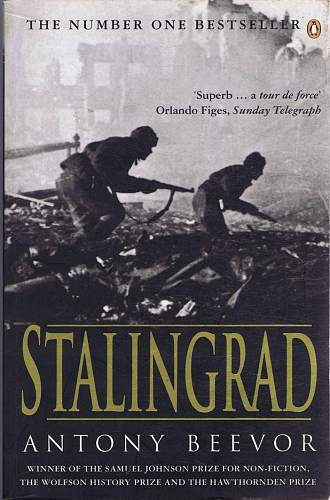
Although perhaps we should stop first to review the situation of the Kessel airfields in Stalingrad...
The 6th Army, like any other such huge military group, used air transport as a normal means of transporting all types of supplies and for the transfer of personnel to and from the rear.
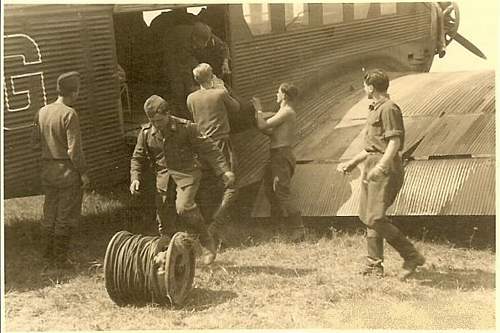
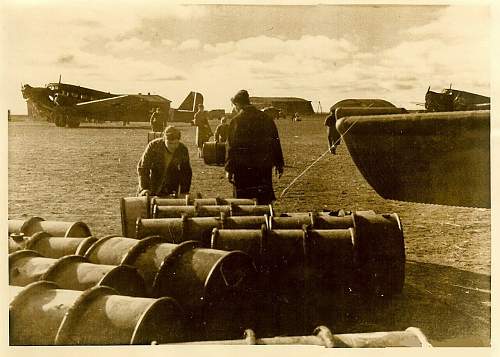
From the moment the airfields in the area were taken: Pitomnik, Gumrak, Karpovka, Bolshaya... they were used by the Germans. Of course throughout the fall of 1942.
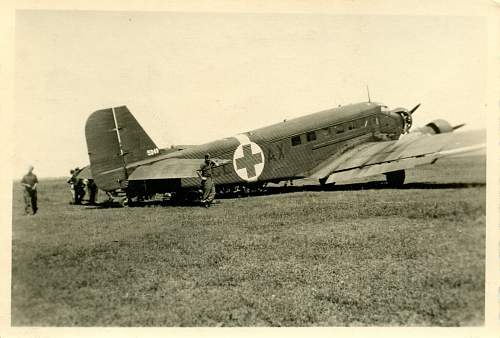
The routine transportation of fuel, mail, medical supplies, transfer of the wounded and sick to the rear.... the usual thing in an army in the field, worked regularly.
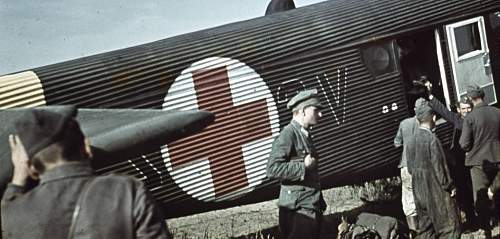
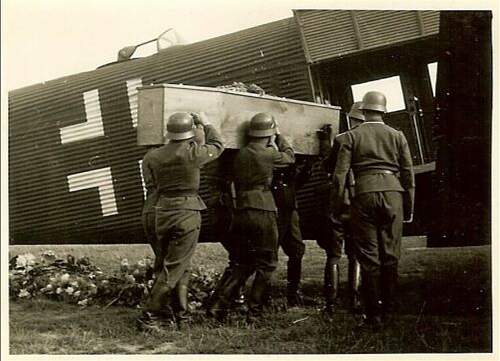
At that time even the coffin of some important fallen person was transferred to the homeland
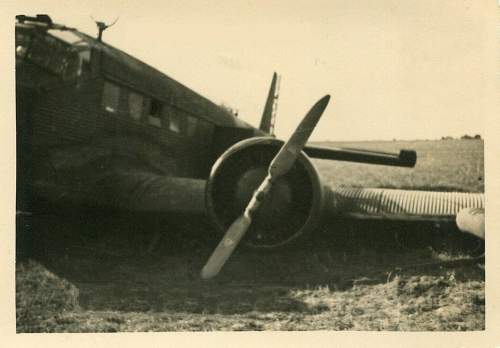
And the number of accidents was the usual: It was a quiet rearguard, you could say...
-
04-28-2024, 01:38 PM
#409

The situation changed drastically after the 6th Army was surrounded by the Soviet offensive.....
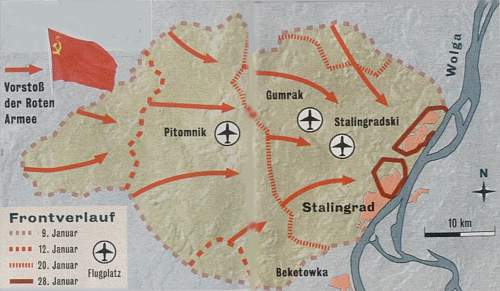
The airfields inside the pocket
The Germans used seven airfields inside the pocket to supply the 6th Army: Pitomnik, Gumrak (present-day Volgograd International Airport), Karpovka, Bolshaya Rossoshka, Stalingradsky, Basargino, and Voroponovo
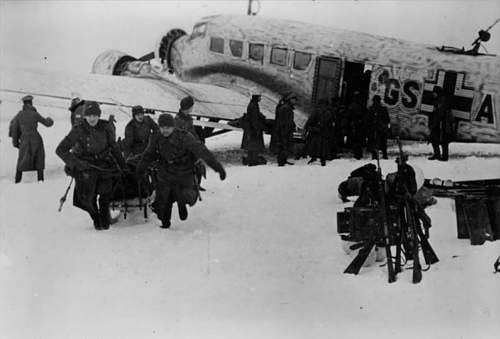
Pitomnik. The airfield was captured by the German 6th Army when it connected there with the 4th Panzer Army on 3 September 1942
From 15 January, Pitomnik came under artillery fire from the Red Army and two days later (17 January 1943), the airfield was captured, leaving the 6th Army with Gumrak as its only supply airfield.
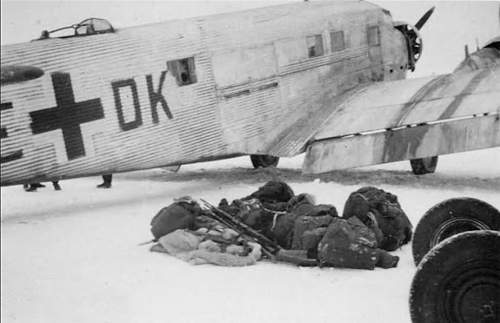
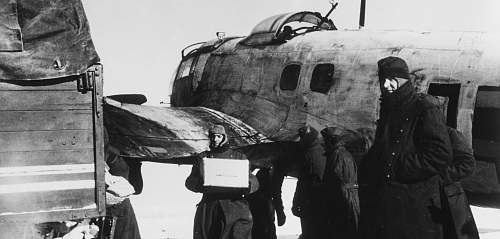
Stalingrad, soldiers unload aircraft.
Karpovka had already fallen on 13 January and along with Pitomnik, four other airfields fell on 17 January. Gumrak finally fell on 23 January, leaving the 6th Army without any direct support...
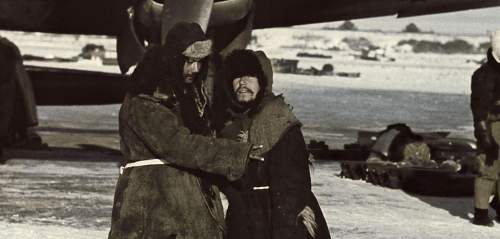
These two Hiwis (workers loading and unloading airplanes at Pitomnik airfield) undoubtedly never left the Kessel
-
04-28-2024, 01:50 PM
#410

The airfields outside the pocket
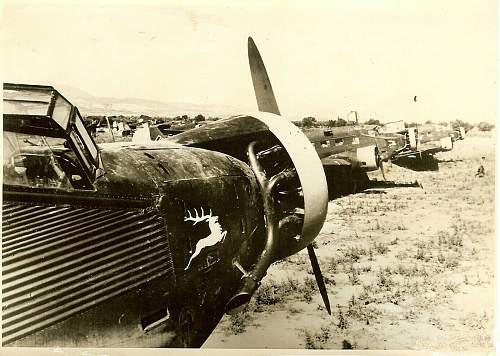
The Tatsinskaya Airfield was the main airfield used by the Luftwaffe during the Battle of Stalingrad to supply the encircled 6th Army from outside.
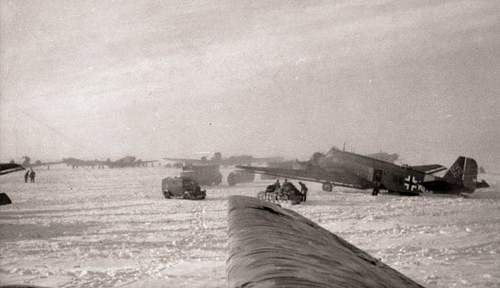
The Tatsinskaya Airfield, 260 km west of Stalingrad, became the most important airfield for the supply of the trapped 6th Army in Stalingrad after all land connections were severed after 24 November 1942, when the airlift began.
From Tatsinskaya, a Junkers Ju 52 plane would take approx. 1¼ hour to reach Stalingrad, from where it would return after a 3½ hour turnaround, theoretically making it possible to complete a mission in six hours. Tatsinskaya served as the main base for the Ju 52 transport planes, while Morozovskaya was mainly used by the Heinkel He 111 bombers, which were converted to transport planes.
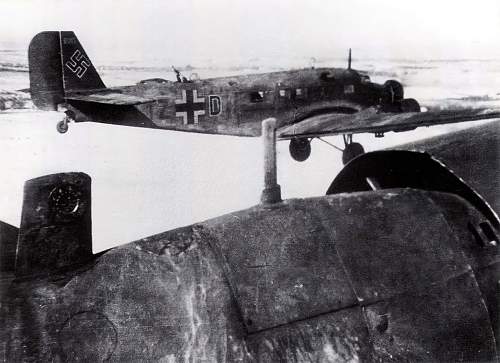
The airfield was under threat of being taken by the Soviet Red Army but Hermann Göring forbade its evacuation, despite request from Major General Fiebig, who was in charge of the air supply for Stalingrad. On 23 December Göring gave permission to evacuate, but it was too late; Tatsinskaya was overrun a day later, with the German Luftwaffe losing almost 70 of the 180 Ju 52s stationed there and all ground equipment.
below two images of the panoramic mural in the Battle Museum in Volvograd. It represents the Soviet capture of the Tatsinskaya airfield
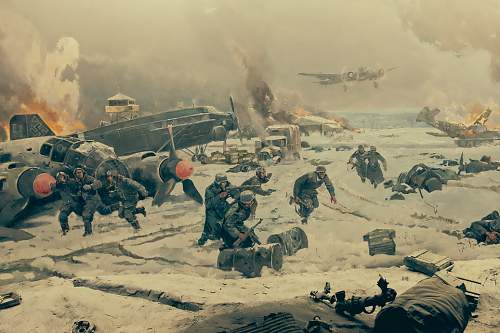
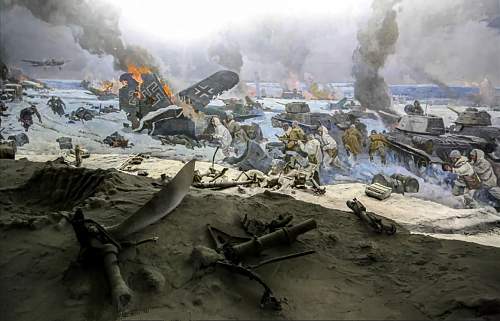
The fall of the airfield, along with the one at Morozovskaya being threatened, brought supplies to the 6th Army to a halt until the 26th. Although briefly retaken by the Germans on the 28th, Tatsinskaya fell back into Soviet hands by 31 December.
After the fall of Tatsinskaya, the Ju 52 from there were relocated to Salsk, while the He 111 went to Novocherkassk, increasing the distance to travel considerably.....
A strange and premonitory picture taken by Siegfried Lauterwasser at Tatsinskaya airfield, Fall of 1942.
The German pilots of the bombers Heinkel He-111 and symbolic funeral. At a coffin inscription in German: “Dein leben – dein gewinn” – your life – your reward. And “mich auch” – for me, too.
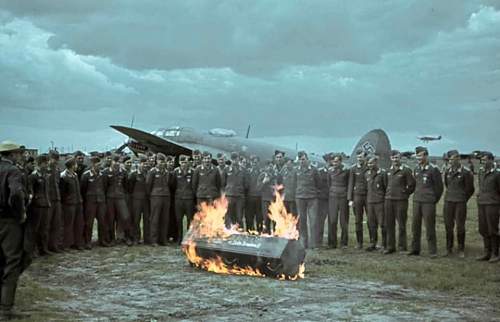
So any man who had to fly to the Kessel from Stalingrad started from quite a distance; as well as the lucky wounded who got a ticket out and whose plane was not shot down by Soviet AA guns.
Last edited by TabsTabs1964; 04-28-2024 at 09:00 PM.
Similar Threads
-
In New users approval forum
-
In Medals, Orders & Decorations
-
In Field equipment, kit and other
 Posting Permissions
Posting Permissions
- You may not post new threads
- You may not post replies
- You may not post attachments
- You may not edit your posts
-
Forum Rules




 .
.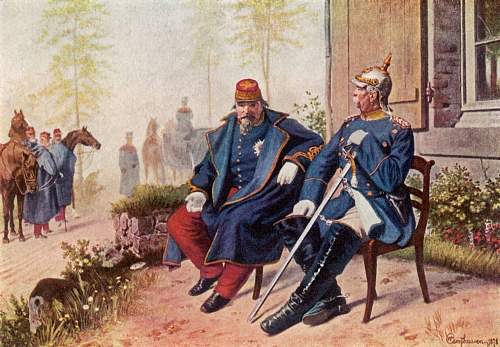
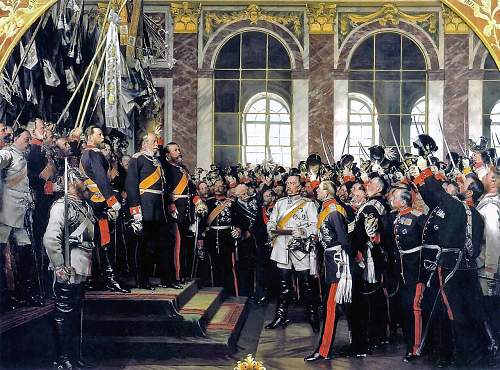
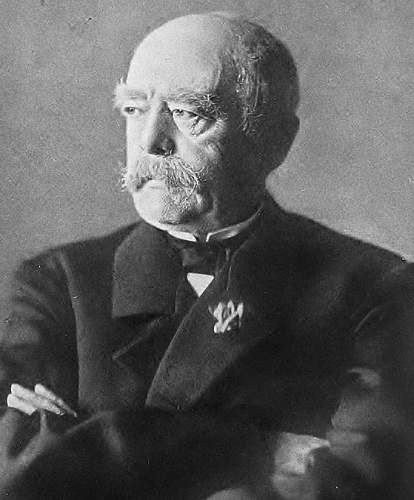











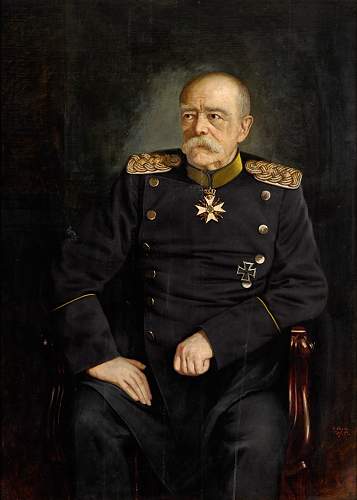
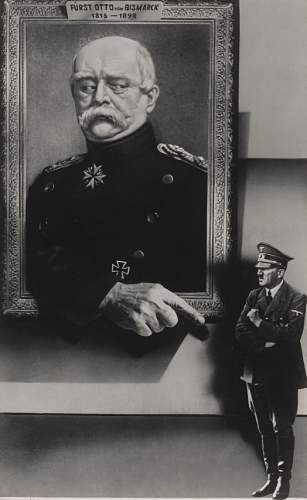
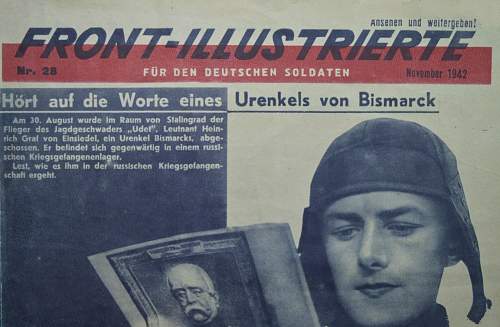
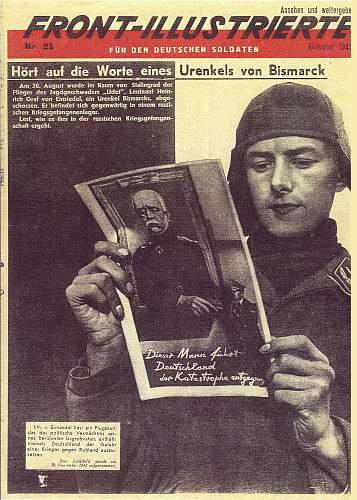
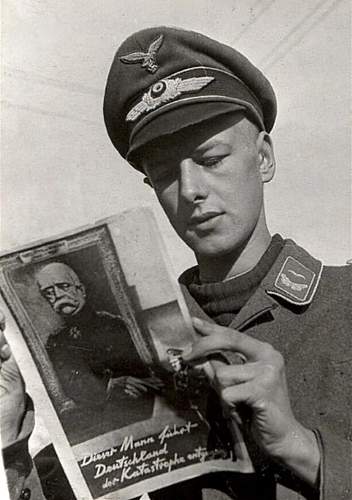




















Bookmarks